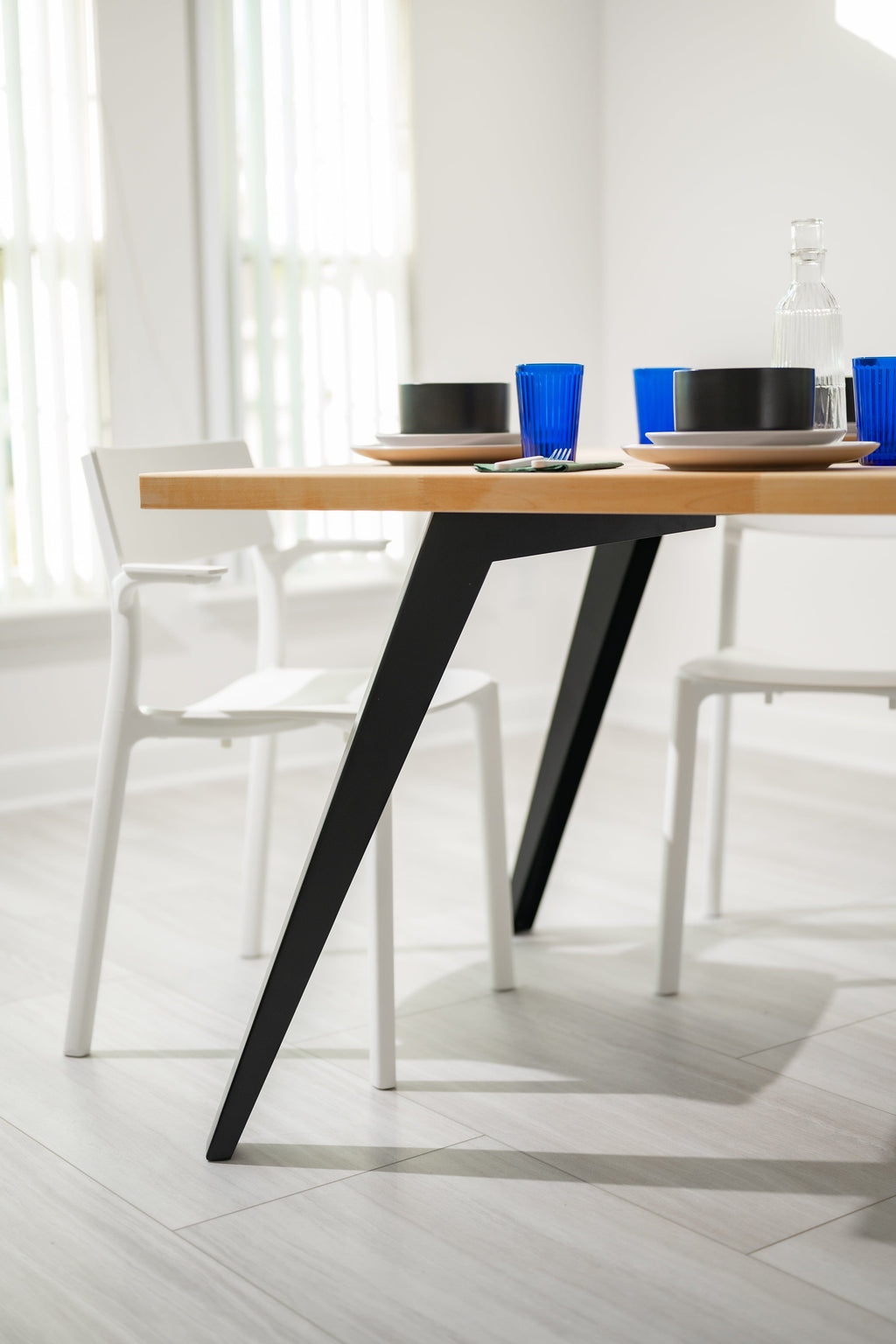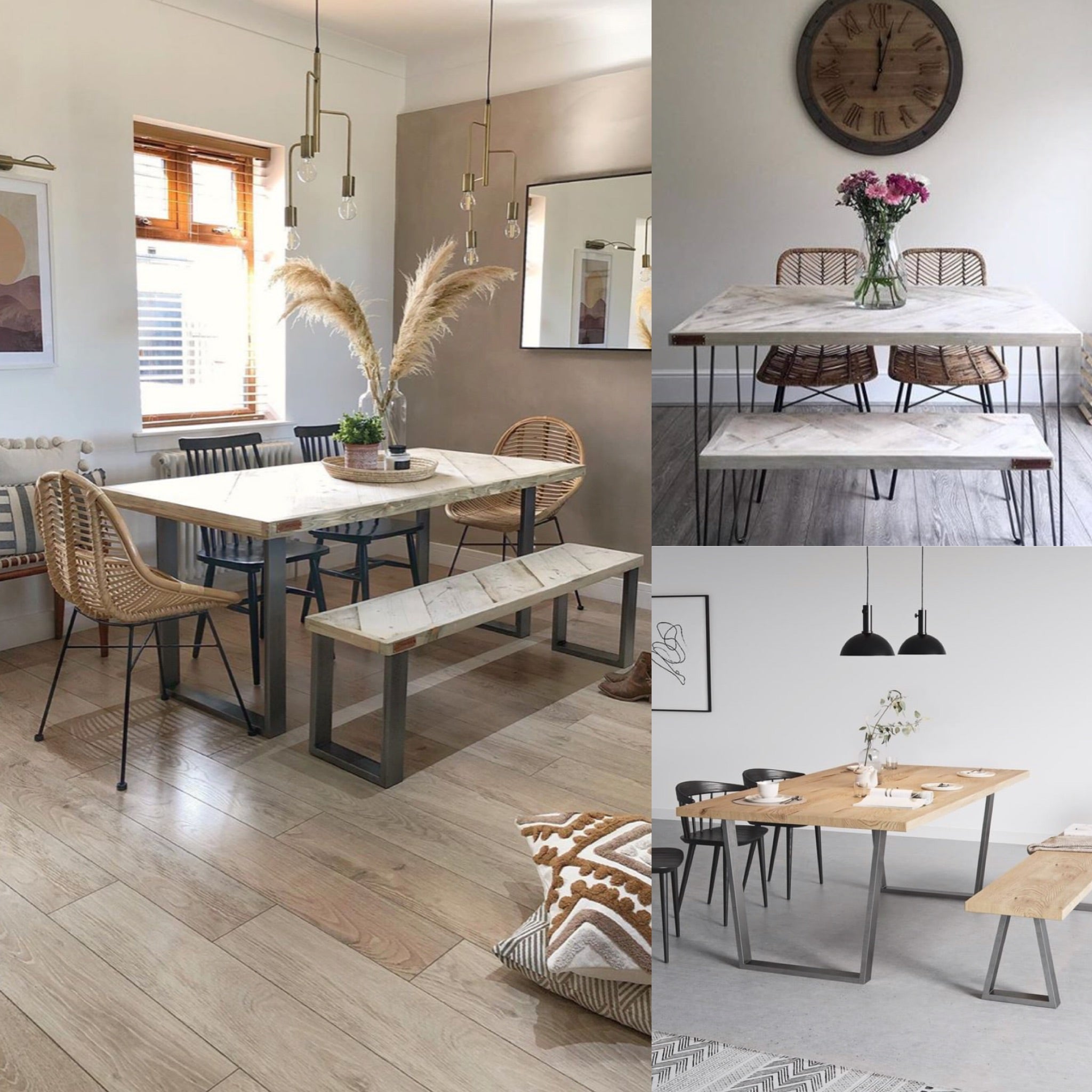Why Dining Room Table Legs Are Crucial for Your Table’s Stability
Why Dining Room Table Legs Are Crucial for Your Table’s Stability
Blog Article
Expert Tips for Setting Up Dining-room Table Legs for Optimum Stability
When it involves mounting eating room table legs, accomplishing optimum stability is critical for both functionality and aesthetics. The procedure starts with picking the right products and hardware, followed by careful positioning and consideration of weight circulation. Each step plays an essential role in ensuring that the ended up product stands up to daily use without compromising safety or style integrity. Understanding the nuances of these components can substantially affect the total result. What particular techniques can boost security even better?
Select the Right Legs
When picking the proper legs for your dining-room table, it is important to take into consideration both performance and visual appeals. The legs you choose will considerably affect the total style and security of the table. Assess the table's intended use; if you expect regular celebrations, tougher legs, such as those made from strong wood or steel, may be extra appropriate, as they use raised sturdiness and assistance.
Conventional eating tables generally vary from 28 to 30 inches in elevation, so guarantee the legs align with this standard for convenience. Conical legs can add a contemporary touch, while turned legs might convey a more traditional visual.

Select Appropriate Equipment
How can the right equipment boost the security and long life of your eating space table? The choice of ideal hardware is essential to making sure that the legs of your table are safely connected and able to endure regular use. Top notch screws, bolts, and braces supply the necessary strength to support the weight of the table, as well as any additional lots placed upon it throughout celebrations or dishes.
When choosing screws, go with those made from sturdy materials such as stainless steel or brass, which stand up to deterioration and maintain integrity gradually. The size of the screws is equally important; they need to pass through deeply right into the table's structure without endangering honesty. For bolted connections, think about using lock washers to stop loosening as a result of vibration or activity.
In addition, utilizing corner brackets can add extra support, particularly for larger tables or those with larger tops. These brackets distribute weight equally and help preserve the table's shape. Making certain that the equipment you pick is appropriate for the specific materials of your table will certainly further improve its total stability and long life, allowing you to enjoy your dining experience for several years ahead.
Ensure Proper Alignment
Appropriate placement of dining space table legs is essential for both aesthetic charm and practical stability. To achieve ideal positioning, begin by measuring the distance from the table's edges to the leg attachment points.
Use a level during installment to verify that each leg is perpendicular to the table top. It is recommended to mark the wanted leg placements on the underside of the table with a pencil or masking tape before securing them.
Additionally, verify the positioning after the preliminary screws are tightened up, as modifications might be required before totally safeguarding the equipment. By prioritizing appropriate positioning, you not only enhance the table's overall layout however also guarantee that it remains useful and secure for several years ahead.

Consider Weight Circulation
After ensuring proper placement of the dining-room table legs, it is necessary to think about weight distribution to boost security and performance. dining room table legs. Correct weight distribution is essential in protecting against wobbling and ensuring that the table can sustain its designated load without risk of tipping or breaking down
When placing the legs, guarantee try here they are placed at equal ranges from the facility of the table to equally distribute the weight across the structure. Take into consideration the weight of the table top and any type of items that will often hinge on it, such as tabletop appliances or ornamental pieces. Tables with much heavier surfaces ought to ideally have legs positioned closer weblink to the edges, as this makes the most of the base of assistance and minimizes the danger of instability.
Furthermore, if the table is planned for use in a high-traffic area, take into consideration utilizing larger materials for the legs or including stabilizing elements, such as cross-bracing or a reduced shelf - dining room table legs. These modifications can help preserve balance and avoid changing throughout use. Ultimately, a well-considered weight distribution strategy will considerably boost the table's overall performance, ensuring it remains a practical and eye-catching centerpiece for your eating area
Examination Security Prior To Use
Testing the stability of the dining-room table prior to use is an essential step see this website that must not be forgotten. Guaranteeing that the table is secure and secure can protect against accidents and extend the life expectancy of the furniture. Begin by applying mild stress to different factors on the table surface area. Press down on the facility and afterwards along the edges, changing or observing any kind of wobbling. If the table shows instability, recognize the legs or joints that may call for adjustment.
Following, examine that all screws and fasteners are tightened properly. Loose connections can lead to instability and prospective damage gradually. If needed, make use of timber glue on joints to enhance security, making certain to allow ample drying time.

Conclusion
Finally, the installment of dining area table legs requires mindful consideration of products, positioning, weight, and equipment distribution to attain maximum security. By choosing top quality fasteners and sturdy legs, guaranteeing specific placement, and distributing weight evenly, the structural integrity of the table can be significantly enhanced. Conducting a security test prior to normal use additionally makes certain that the table will withstand daily pressures, thereby supplying a risk-free and dependable dining experience.
When it comes to mounting eating room table legs, achieving optimum security is critical for both performance and appearances. The legs you choose will substantially impact the general layout and security of the table (dining room table legs). Basic dining tables usually range from 28 to 30 inches in height, so ensure the legs straighten with this requirement for convenience.Correct alignment of eating space table legs is crucial for both aesthetic appeal and useful stability.In conclusion, the installation of eating space table legs requires mindful factor to consider of materials, weight, equipment, and positioning circulation to achieve optimum security
Report this page